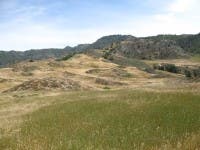
Researchers at University of Toronto and the Swiss Federal Institute of Technology Zurich (ETH Zurich) have recently published a paper that claims exotic plant species do indeed eliminate native plants from the wildlife ecosystem, contrary to previous reports that found the threat unreal.
The ecologists argue that reports heralding invasive plants as non threatening are based on incomplete information, since not enough observational time had been granted. The researchers claim the impact invasive plants has on a native ecosystem isn’t felt immediately and requires some time before they dominate the habitat – a steady but sure fact.
“The impacts of exotic plant invasions often take much longer to become evident than previously thought,” says Benjamin Gilbert of U of T’s Department of Ecology & Evolutionary Biology (EEB) and lead author of the study. “This delay can create an ‘extinction debt’ in native plant species, meaning that these species are slowly going extinct but the actual extinction event occurs hundreds of years after the initial invasion.”
Native plants face dire competition – the battle is a slow one though
The whole conundrum comes from the fact that very few species have been found to become extinct as a result of exotic species. What happens, however, is that often native plants are moved out and forced to survive in patchy, marginal habitats unsuitable to their nonnative competitors.
“Of particular concern is the possibility that short term persistence of native flora in invaded habitats masks eventual extinction,” says co-author Jonathan Levine of ETH Zurich.
The researchers visited the California reserve, a well known ecosystem to ecologists where the remaining native plant diversity can only be found in the marginal areas surrounding non-native plants. After performing experiments and gathering data, the scientists performed a quantitative model in order to determine what long term impact invasive plant species have on the local ones.
“Invasion has created isolated ‘islands of native plants’ in a sea of exotics,” says Gilbert. “This has decreased the size of native habitats, which reduces seed production and increases local extinction. It also makes it much harder for native plants to recolonize following a local extinction.”
“Our research also allows us to identify how new habitats for native flora could be created that would prevent extinction from happening. These habitats would still be too marginal for invaders, but placed in such a way as to create ‘bridges’ to other habitat patches,” says Gilbert.
Findings were reported in the journal PNAS.
source: University of Toronto






